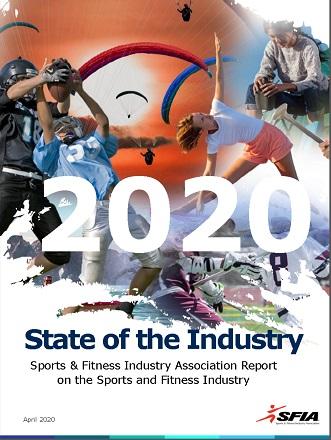

The report consolidates data and analysis on product sales, industry trends, and sports and fitness participation rates, but officials admit the findings come at an awkward time.
“Given the dramatic downturn so many in our industry are currently experiencing, it’s a bit challenging to highlight last year’s healthy performance; but the pre-COVID evidence should give companies encouragement that the sports and fitness industry was strong, sustainable and central to American way of life before the pandemic, and should return to vitality as we recover,” Tom Cove, SFIA president and chief executive officer, said in a statement. “Now more than ever, Americans’ health is top priority, and being physically active is key for every individual, family and community. Our industry can be part of the long-term solution in inspiring and facilitating the country to be active and healthy.”
Team sports showed some of the highest participation increases, along with outdoor activities and fitness, according to the report.
The growth in team sports is attributed to traditional sports (with larger bases) attracting more participants in 2019 — particularly basketball (2.9 percent), outdoor soccer (4.5 percent), flag football (3.2 percent) and volleyball (2.7 percent). While these mainstream sports drove total category growth, SFIA’s research also found that only fewer than half of the 23 team sports measured increased in participation.
Other encouraging findings included the following, according to SGB Media:
- Athleisure, as it has for some time, continued to dominate footwear and apparel and drove sales growth to make up for softer performances in performance categories.
- Two-thirds of the sporting goods industry reported that business was going well, and they continued to have an optimistic outlook for the future. Companies were found to be more aggressively investing in inventories than 2018. Slightly more planned to increase their R&D investments in 2020 when compared to the 2019 projection.
- Inactivity levels decreased for the first time in 10 years led by a continued improving trend in youth age segments 6-to-12 and 13-to-17.
“A serious concern that SFIA continues to flag is how household income is correlated to physical inactivity,” Cove wrote in the report’s Executive Summary. “Households in lower income brackets ($49,999 and below) were significantly more inactive than those in higher income brackets ($50,000 and above). SFIA believes that our country has a special responsibility to ensure that access to sport and fitness is open to all, without regard to one’s income. It is a moral imperative, as well as a surefire way to reduce long-term health care costs. We look forward to working with the entire sports, fitness and outdoor recreation community to address this issue.”
The report also examines a variety of industry trends around consumer behavior, inventory management, technology investments and the impact of increasing tariffs on sourcing decisions.
The 2020 State of the Industry Report is free to SFIA members and available to the public for purchase here.

